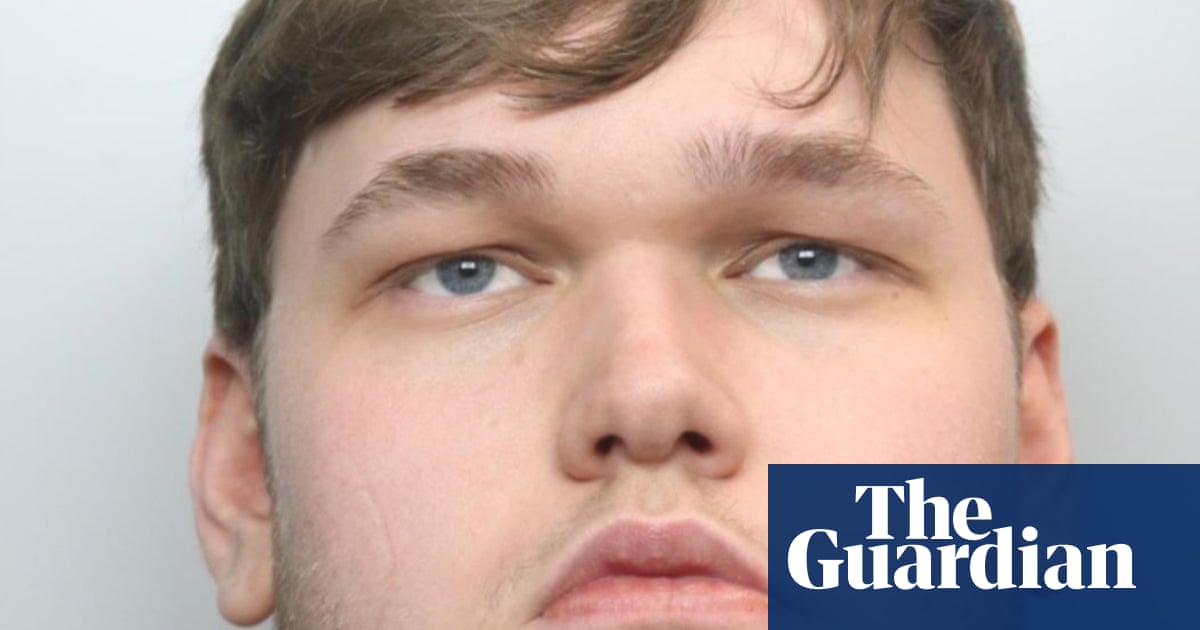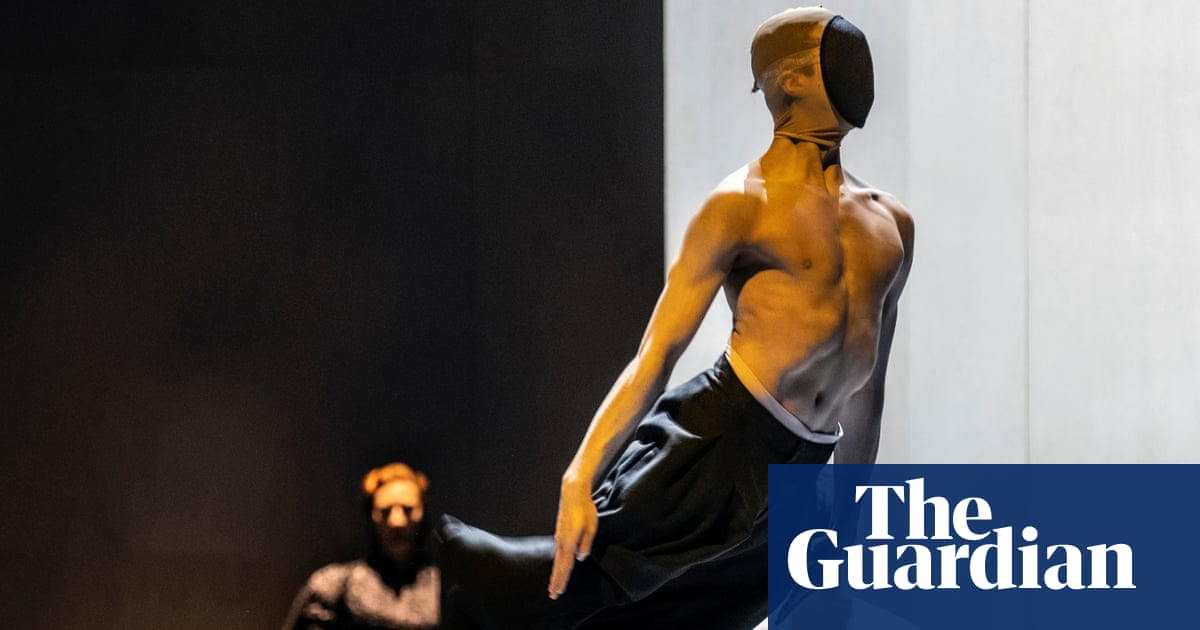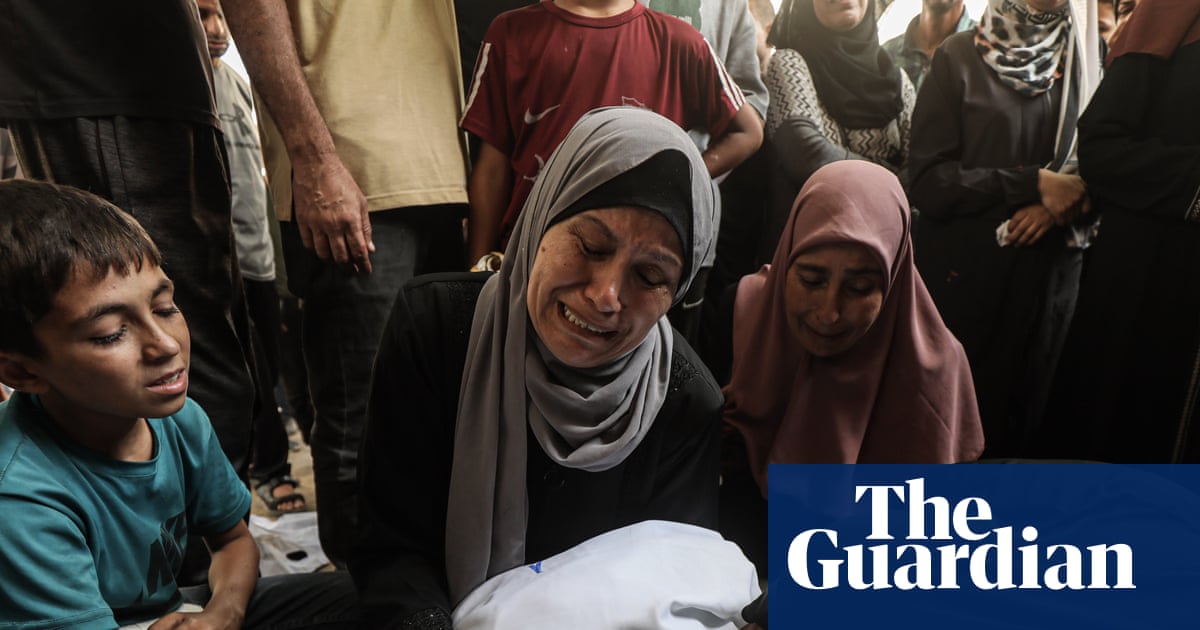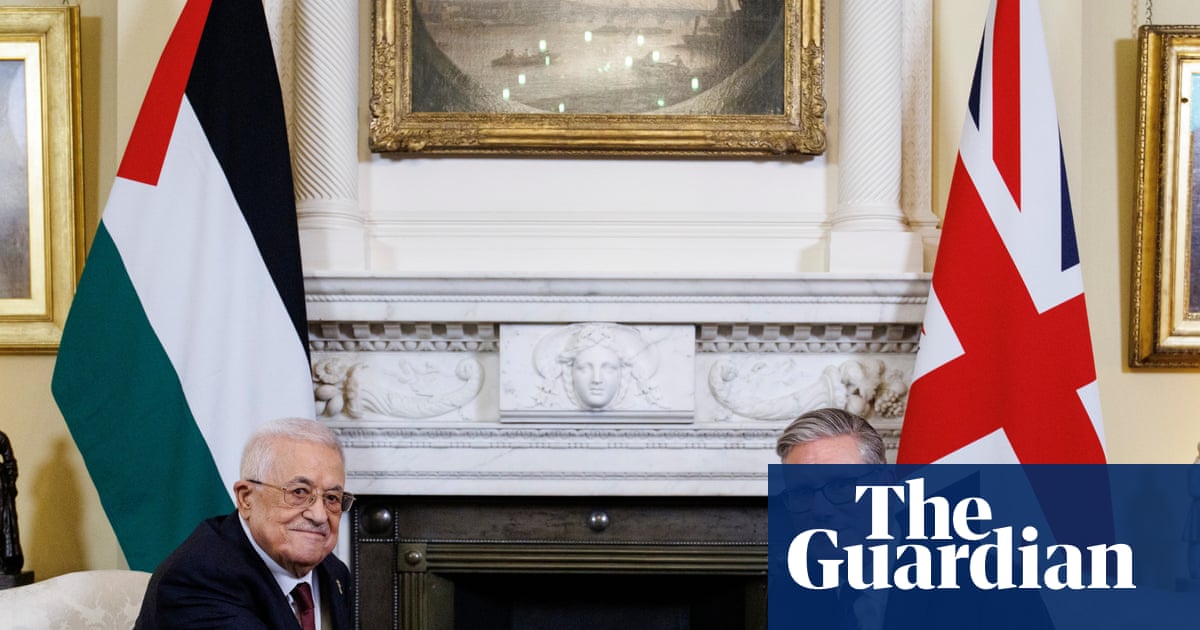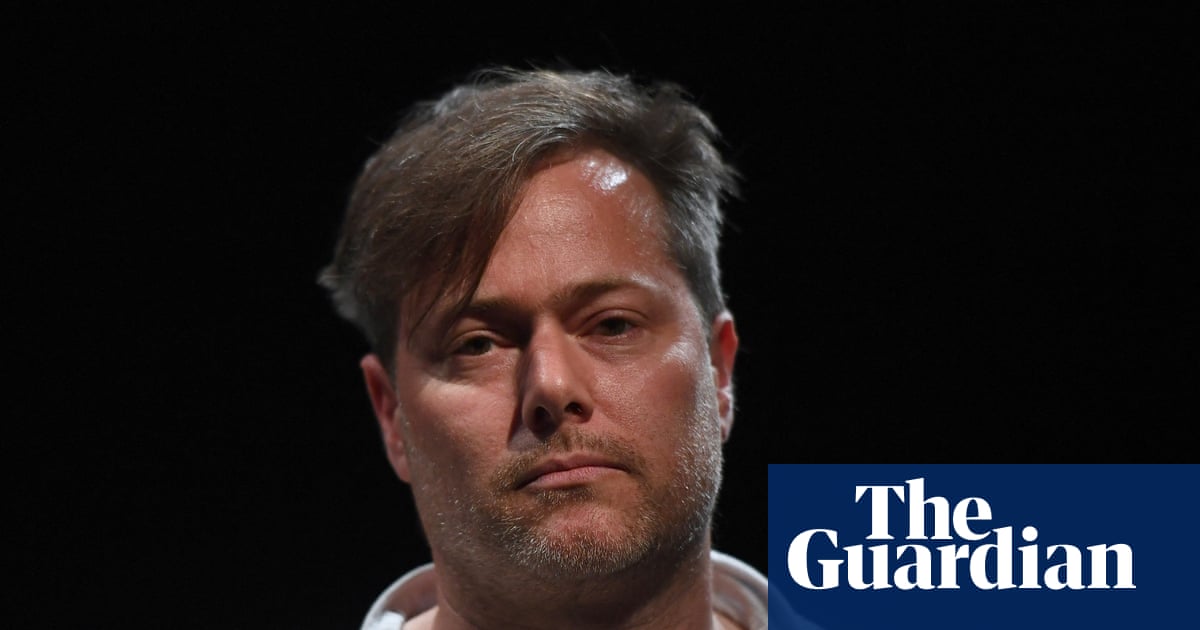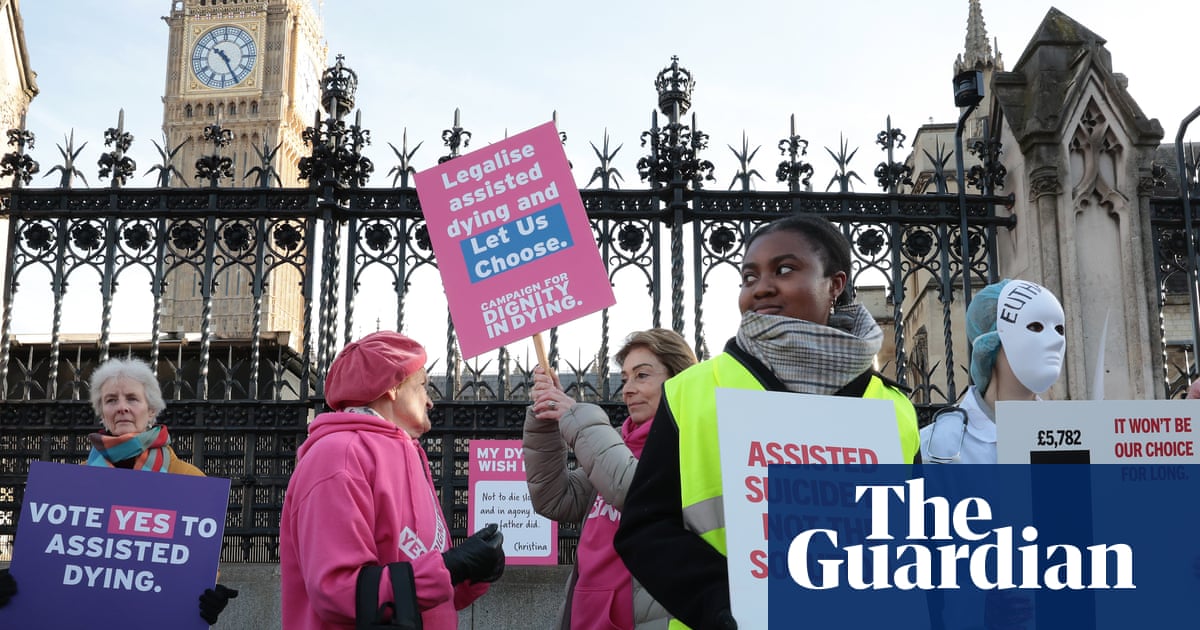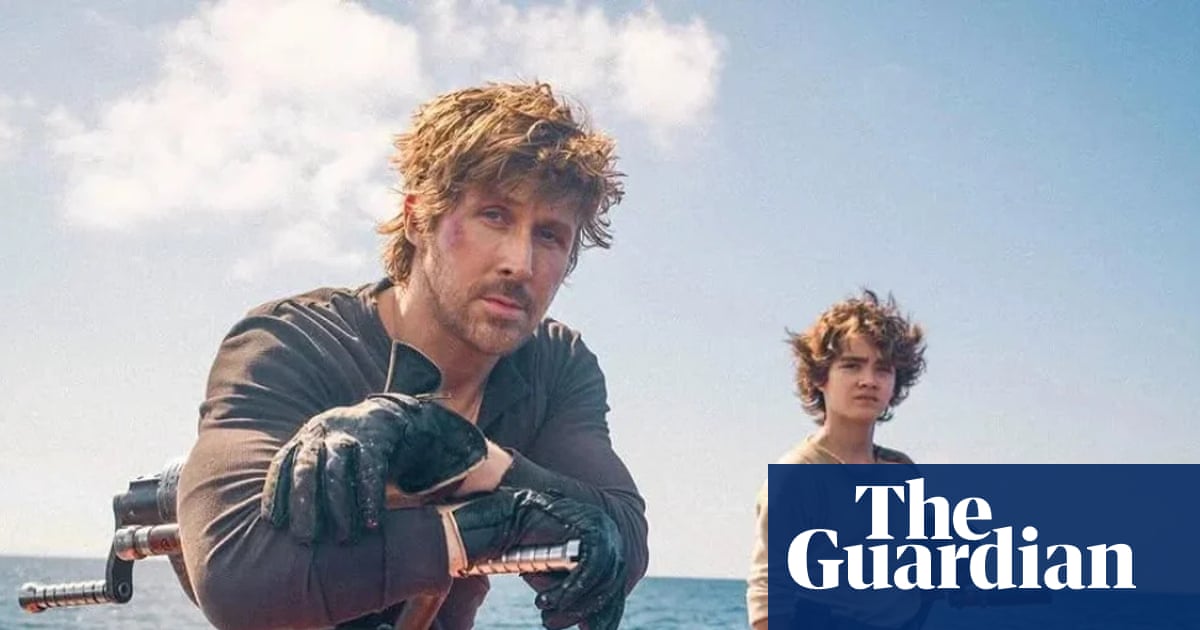“Missing son.” “Missing father.” “Missing grandmother.”
The words are written in bright red letters at the top of posters hanging on lampposts and storefronts around Los Angeles. At first glance, they appear to be from worried relatives seeking help from neighbors.
But a closer look reveals that the missing people are immigrants to the US who have been disappeared by Immigration and Customs Enforcement (Ice). Some of the faces are familiar to anyone who has been following the news – that missing father, for instance, is Kilmar Ábrego García, the Maryland man who was deported to El Salvador in March without a hearing, in what the Trump administration admitted was an error. “Abducted by Ice,” the poster reads, under a picture of Ábrego García with his small son. “Did not receive constitutional protections. Currently being held in detention.”
The missing grandmother is Gladis Yolanda Chávez Pineda, a Chicago woman who was taken by Ice when she showed up for a check-in with immigration officials this month. She had arrived in the US seeking a better life for her daughter and was in the midst of applying for asylum. “Lived in the US for 10 years,” the poster states. “No criminal history.”

The missing son is Andry Hernández Romero, a makeup artist who fled persecution in Venezuela. On arrival in the US, he was detained, with US authorities claiming his tattoos indicated gang membership. His family and friends say that’s ridiculous. He was among hundreds of people deported to the El Salvador mega-prison known as Cecot in March. “Currently being held in a concentration camp,” the poster says.
The posters are just a few examples of a campaign of quiet resistance on the streets of Los Angeles. On Monday, a walk down Sunset Boulevard in the historic Silver Lake neighborhood meant encountering an array of flyers, artwork and spray-painted messages of support for disappeared immigrants and fury at the administration.
The “missing” posters, which have also appeared in other neighborhoods, were particularly effective. Duct-taped to telephone polls amid ads for comedy shows, guitar lessons and yard sales, they reminded passersby of the individual lives derailed by Trump’s immigration crackdown – instead of names in the news, these were families and friends who might have lived just down the road.
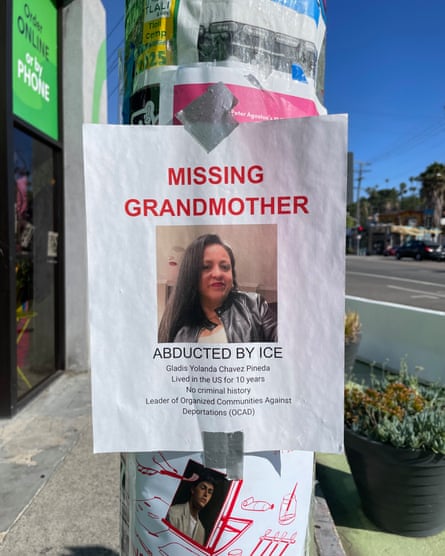
Humanizing people’s stories was precisely the goal, said the creators behind the posters.
“I just wanted to reframe this idea of immigrants as criminals, and put into perspective that these are people – this is someone’s grandmother, this is someone’s father, this is someone’s son,” said Ben*, the posters’ 28-year-old designer. He worked with his friend Sebastian*, 31, to distribute them around town.
What began as a friends-and-family effort expanded after Ben shared the PDF: “I shared it with a few friends, then they shared it, and so it kind of just blew up.”
For Sebastian, the issue was personal. “I moved here from Colombia 14 years ago, and ever since the first Trump administration, I’ve seen my community being attacked,” he said. “So as soon as I saw these posters that my friend was doing, that I felt something in me that needed to go out and help.”
While they worked, “people started taking photos, and I had a moment with this one elderly woman where she was looking at it, and she really just started tearing up,” Ben said. “At that moment, I was like, ‘OK, this is actually connecting to people.’”
The images have appeared in recent days as the city has become a focal point for protests against Trump’s immigration policies, which began on 6 June amid raids targeting immigrants at several locations in the city.
As the protests emerged in parts of LA, Donald Trump called in the national guard without the governor’s consent – an action no president has taken since 1965. Shortly afterward, he summoned hundreds of marines. Much news coverage painted the city as a kind of post-apocalyptic hellscape, with protesters facing off against troops and cars on fire, fueling Trump’s narrative of a lawless city hopelessly embroiled in chaos.
In fact, much of the unrest was confined to a small area of downtown LA. Across most of the vast city and county, life continued as normal, the sun shining over familiar traffic jams, studio lots and suburban sprawl. Still, the protests – and the federal government’s wildly disproportionate clampdown – served as a spark that has helped to fuel a national outcry, as well as this subtler demonstration of local solidarity.
Alongside the “Missing” posters were a series of alternative descriptions of Ice – rather than Immigrations and Customs Enforcement, stenciled messages on the pavement and shop windows condemned “Illegal Country-wide Embarrassment”, “Institution of Child Endangerment” and the perhaps less clear “Insecure Confused Ejaculation”.
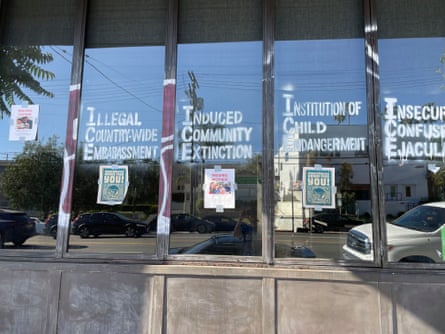
Other flyers advertised Saturday’s “No Kings” protests, while still others noted that “Undocumented hands feed you”, with an illustration of a person working in a field. Those latter posters were created by Sydney*, 29, who works in the music industry in Los Angeles. Her 9-to-5 job makes it impossible to attend protests, she said, so creating this image was an alternative way to participate in resistance. “You read something tragic every morning lately about the Ice raids,” she said.
She was particularly moved by the plight of agricultural workers, toiling for low wages under the threat of immigration crackdowns. “I just felt very compelled to speak up for them in places that people probably don’t think about them, like Silver Lake and the city,” she said. “I am Latina. I have many family members that came here and are immigrants, and so it just touches home for me.”
Inspired by a slogan she saw in protest photos and Mexican decor flags, Sydney created the stylized image as a social media post. “I just wanted to tie something beautiful with something very political and loud,” she said. A friend saw the post, asked if she could print it out, and plastered it around town.
That DIY approach adds to the posters’ power: there is a sense of neighbors helping neighbors. As the administration conjures a tale of a city in crisis, the images – unpretentious and haunting – serve as a reminder of what the protests are actually about.
* The Guardian is withholding full names for privacy reasons

 3 months ago
81
3 months ago
81

